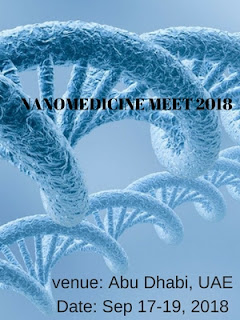Trends of Carbon Nanotubes in Medicine
Nanomedicine is the emerging technologies and a
branch of nanotechnology finding applications in healthcare. Several countries are
pursuing active research programs in nanomedicine to explore novel healthcare
solutions to address specific healthcare needs of the society. It is
anticipated that in the next 5 years or so, several nanomedicine-based products
shall reach the market.
Carbon nanotubes (CNTs), discovered by Japanese
scientist Iijima in 1991, and it is now considered to be a top class subject in researches as well as in several industrial
areas. The nanomaterials are allotropes of carbon which is made of graphite,
and have been constructed in cylindrical in shape and few nanometres in
diameter and several millimetres in length. Their structural, mechanical, and
electronic properties are due to their size and mass, their incredible
mechanical strength, and their high electrical and thermal conductivity.
First Carbon nanotubes have been used as
additives to various structural materials in electronics, optics, plastics, and
other materials of nanotechnology fields. In 21st century, they have been
introduced in pharmacy and medicine for drug delivery system in therapeutics. They
have high surface area, excellent chemical stability, and rich electronic
polyaromatic structure, CNTs are able to adsorb or conjugate with a wide
variety of therapeutic molecules (drugs, proteins, antibodies, DNA, enzymes,
etc.).
In pharmacokinetical Studies and metabolism of
diverse forms of CNTs have been investigated and some review articles about
them have been reported in the literature recently. The
biodistribution and pharmacokinetics of nanoparticles depend on their
physicochemical characteristics such as surface functionalization, solubility,
shape, aggregation, and chemical composition.
The results of CNT toxicological assays found in
the literatures seem to be contradictory. Some preliminary in vitro tests have been
done by scientists that CNTs are toxicologically benign to certain cells, while
other further studies have indicated that CNTs, especially raw materials are
potentially dangerous to many living systems. But the discovery of this bionanotechnology has
opened new alternatives more effective than the ancient drug delivery methods
since CNTs can pass through cell membranes, carrying drugs, genes,
biomolecules, vaccines, and so forth deep into the target cells or organs
previously unreachable.




Comments
Post a Comment